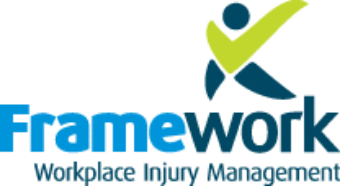Essay Question: What is the semiotics of the return to work industry?

The current approach to rehabilitation and return to work is based on the reductionist medical model where the human body is symbolic of a machine comprised of divided parts. Wellness is then considered to be the absence of physical – and occasionally mental – symptoms, and treatment for illness involves the systematic elimination or management of these symptoms based on a predetermined treatment plan. This reductionist model does not recognise the individual as a whole person who is part of a family, community and culture, rather as a set of symptoms[1].
Recovering from injury and illness and returning to work is multifaceted. Effective rehabilitation requires a holistic perspective towards health and wellbeing, taking into consideration the physical, psychological, spiritual and social factors of the individual. The individual must be understood in their entirety, and as all factors are inextricably linked, if one is not being attended to, the others will certainly be affected[2].
This paper will argue that labels used in return to work guidance[3] – in particular ‘injured worker’ – and the failure to acknowledge the importance of social connectedness, frames the return to work process as a reductionist and mechanical system that does not recognise the complexity of human beings or the significance of a holistic approach towards successful rehabilitation. I will also show how this same language creates a discourse of control, power and de-humanisation, that essentially alienates and isolates the recovering individual, damages effectiveness of relationships and return to work outcomes, and increases the likelihood that the recovering individual will experience secondary psychological conditions such as depression and anxiety.
Labels or stereotypes shape how we see the world. They unconsciously affect our perception of objects, nature, individuals – including ourselves – social communities and cultures, and subsequently influence our relationships and behavior. Labels simplify the complexity of the world through categorisation. Once a label is in place it is extremely difficult to remove[4]. When a label is applied to an individual, they are seen as an object – something to be used, possessed, fixed or controlled[5]. The uniqueness and humanness of the individual is lost – along with it the opportunity for building relationships based on care, trust and respect – and enables the exploitation and exclusion of the individual that has been labelled[6]. Labelling affects everyone; even physicians who have taken the ‘Hippocratic Oath’ unconsciously treat their patients differently depending on the label and stereotype that has been applied. With kind and friendly personal treatment provided to those who are perceived as having no responsibility for the injury and impersonal treatment to those seen as negligent with no excuse[7]. I will now deconstruct the label ‘Injured Worker’ and explore how it can influence the return to work process and the potential social and psychological implications of its use.
When the label of ‘Injured’ is applied to an individual, it positions them in a class of society with certain obligations and prescriptions for how they are to behave and how they are to be treated by other members of society[8]. Individuals labelled injured are to be provided with care and discharged from their social obligations, including those duties normally performed at work and home when considered healthy. The trade-off from these rights afforded them is that they must exclude themselves from the privileges and situations enjoyed by the healthy. Being labelled as injured is stigmatising. Society perceives the injured as an inconvenience and a burden, as they are dependent on the healthy and disrupt the smooth running of everyday activities[9]. This label can cause individuals to become withdrawn, self-conscious, anxious, frustrated, angry and depressed, as their isolation from society causes them to question their usefulness, purpose and identity[10].
The symbolism of the label ‘worker’ connotes the individuals’ incorporation into an economic system[11]. The worker has lost their uniqueness and humanness and has instead become an impersonal cog in the machine, a commodity to be used in the pursuit of profit. This system is stratified and hierarchical, with the powerful owner – or capitalist – at the top, and the worker – or proletariat – at the bottom. The value of the worker is in their ability to create goods and services for the owner, to be sold at a profit on the market. If they are no longer profitable, they are no longer valuable and can be easily replaced like spare parts in a machine[12]. The working relationship becomes one of money and power rather than that of community, care, and respect[13].
This dehumanization of the worker creates a discourse of reductionism and efficiency. The worker becomes something to be used, possessed, controlled, fixed, and exploited. The most important goal is returning the worker to their place in the system as efficiently as possible. How this goal is pursued will be influenced by the discourse, resulting in the disregard for a holistic approach to recovery – that incorporates the individual’s social, psychological, and spiritual needs – in preference for a reductionist approach that will focus solely on the systematic elimination of the worker’s physical symptoms, as determined by the return to work plan.
When an individual is treated impersonally and as an object, there is no opportunity for establishing a human connection or relationship, depriving them of their fundamental need to belong[14]. This deprivation creates feelings of distrust, anxiety, loneliness, depression, and frustration, and can have an impact on the successful recovery of the individual. Rather than fixing the individual, a reductionist approach to return to work can create additional complications through the absence of effective relationships and the secondary psychological conditions that may develop as a result of this alienation.
The social and psychological implications of being labelled an ‘injured worker’ are not as visible as the physical symptoms of an injury, but are just as damaging to the individual and their relationships at work and home. The extensive use of this de-humanising and isolating label in the guidance[15] is propagating a discourse of power and control for employers and the healthy, and alienation and marginalisation for the recovering individual, which in turn is hampering the effectiveness of the return to work system. Creating and sustaining health and wellbeing is dependent on society’s capacity to create connections and relationships rather than isolating and de-humanising. Humans’ fundamental need is that of belonging, as long as individuals are perceived as objects or things that require fixing, human connection is unattainable[16]. Labelling is not the only method in which recovering individuals can be alienated by the return to work system. The lack of recognition of the importance of remaining connected to communities – the work community in particular – can also hinder effective rehabilitation.
In many instances work has become the primary source of social interaction and community for an individual. A substantial proportion of Australians are spending 50 hours or more per week at work[17]. There has been a decrease in religious group affiliation and participation in organised sporting and cultural activities is on the decline[18]. The traditional family unit is also changing, with significant increases of both single occupancy households and single parent families projected over the next 20 years[19].
The workplace is not just a source of income; it is a source of wellbeing. Humans are social by nature; community membership is necessary for health and wellbeing, and a sense of identity and security[20]. With so much time spent in the workplace and a decline in traditional community affiliations, any time away from work can increase the risk of social isolation and psychological conditions such as depression, anxiety and paranoia[21]. Behavioural research on motivation has also indicated that support from significant others – including family members, friends, employers and work colleagues – has been shown to be more influential on an individual’s motivation towards an effective recovery than the support of a health practitioner[22].
The guidance has largely overlooked the influence social interaction and community has on wellbeing, in fact only one publication emphasised the importance of seeking family support and maintaining connections with work colleagues[23]. When guidance is principally framed by language that primes for control and process, a discourse of de-humanisation and objectivity will develop that disregards the significance of humanising elements such as support, community and relationships. This mechanistic and impersonal approach to return to work is ineffective, can alienate the injured individual, and increases the risk of secondary psychological illnesses developing.
The language used in the guidance materials is biased towards a return to work system based on objectivity, systematicity and reductionism. This is evidenced by the use of de-humanising and process centered words such as ‘injured worker’ and ‘compliance’ being collectively referenced over one thousand times. In contrast, humanising and people centered words such as ‘trust’, ‘care’, ‘relationship’, ‘community’, ‘support’ and ‘person’, are only collectively referenced one hundred and fifty times.
The use of these words prime the participants into a mindset of reductionist systems and process thinking, where the recovering individual is not seen in their entire humanness – as a unique person – rather they are seen as a set of symptoms that are to be systematically eliminated or managed by a predetermined process. They are viewed as an object to be fixed, not a human to be connected with and related to. This treatment and perception of the individual cannot lead to the building of genuine relationships fostered by trust and care. The individual is left alienated, isolated, angry and powerless, leading to the development of psychological conditions such as anxiety and depression.
Discounting the importance of the maintenance of social interaction and relationships for health and wellbeing hampers the effective recovery of the individual. Feeling disconnected and outcast, they are less likely to actively participate in the return to work process. This can prolong their rehabilitation, amplifying society’s resentment towards the ‘injured worker’, fueling their feelings of frustration, hopelessness, self-consciousness and anger, ultimately leading to more serious psychological conditions.
In order to shift from the current reductionist methods towards a holistic approach to return to work, it is imperative that leaders replace de-humanising and process centered language with humanising and people centered language[24]. The unconscious influence language has on behavior and decision-making should not be underestimated. Only with a humanising discourse is acknowledgement of an individual’s uniqueness and complexity, and understanding of the influence family, community and culture has on effective rehabilitation possible. Without this, we will always be trying to finish the jigsaw puzzle with only half the pieces.
Click here to read further
Bibliography
Aghadiuno, M., Soul Matters: The Spiritual Dimension Within Healthcare, Oxford, Radcliffe, 2010.
Alter, A., Drunk Tank Pink, New York, Penguin Books, 2014.
Buber, M., I and Thou, London, Continuum, 2004.
Fromm, E., Fear of Freedom, London, Routledge, 1960.
Gorin, A., Powers, T., Koestner, R., & Wing, R., Autonomy Support, Self-Regulation, and Weight Loss, Health Psychology, Vol. 33, No. 4, 2014, pp. 332 – 339.
Long, G., Love Over Hate, Richmond, The Slattery Media Group, 2013.
Long, R., For the Love of Zero: Human Fallibility and Risk, Kambah, Scotoma Press, 2012.
Long, R., & Ashhurst, C., Following-Leading in Risk: A Humanising Dynamic, Kambah, Scotoma Press, 2014.
Marx, K., & Engels, F., The Communist Manifesto, New York, Pathfinder, 2008.
Radley, A., Making Sense of Illness, London, Sage Publications, 1994.
Victorian Workcover Authority., Compliance Code 1 of 4: Providing employment, planning and consulting about return to work, Melbourne, VWA, 2014.
Victorian Workcover Authority., Compliance Code 2 of 4: Return to Work Coordinators, Melbourne, VWA, 2014.
Victorian Workcover Authority., Compliance Code 3 of 4: Return to Work Information, Melbourne, VWA, 2014.
Victorian Workcover Authority., Compliance Code 4 of 4: Cooperating With Labour Hire Employers About Return to Work, Melbourne, VWA, 2014
WorkSafe Victoria, Return to Work Coordination: The Basics You Need to Know, Melbourne, WorkSafe Victoria, 2013.
WorkSafe Victoria., Returning to Work: A Guide for Injured Workers, Melbourne, WorkSafe Victoria, 2011.
[1] Aghadiuno, M., Soul Matters: The Spiritual Dimension Within Healthcare, Oxford, Radcliffe, 2010. pp. 2-14.
[2] Ibid., pp. 5-14.
[3] Unless specified otherwise, Guidance collectively refers to the following publications;
Victorian Workcover Authority., Compliance Code 1 of 4: Providing employment, planning and consulting about return to work, Melbourne, VWA, 2014.
Victorian Workcover Authority., Compliance Code 2 of 4: Return to Work Coordinators, Melbourne, VWA, 2014.
Victorian Workcover Authority., Compliance Code 3 of 4: Return to Work Information, Melbourne, VWA, 2014.
Victorian Workcover Authority., Compliance Code 4 of 4: Cooperating With Labour Hire Employers About Return to Work, Melbourne, VWA, 2014.
WorkSafe Victoria, Return to Work Coordination: The Basics You Need to Know, Melbourne, WorkSafe Victoria, 2013.
WorkSafe Victoria, Returning to Work: A Guide for Injured Workers, Melbourne, WorkSafe Victoria, 2011.
[4] Alter, A., Drunk Tank Pink, New York, Penguin Books, 2014, p. 29.
[5] Buber, M., I and Thou, London, Continuum, 2004, p. 14.
[6] Ibid., p. 30
[7] Radley, A., Making Sense of Illness, London, Sage Publications, 1994, pp. 103-104
[8] Ibid., p. 65.
[9] Ibid., pp. 75-82.
[10] Alter., op.cit., p. 42.
[11] Although many economic systems exist, for the purposes of this paper capitalism has been chosen to use as an example. This is due to the fact that capitalism is currently the system adopted in Australia – where the return to work guidance materials were developed for use.
[12] Marx, K., & Engels, F., The Communist Manifesto, New York, Pathfinder, 2008, p. 39.
[13] Ibid., pp. 33-34
[14] Long, G., Love Over Hate, Richmond, The Slattery Media Group, 2013,
[15] Injured Worker is referenced 820 times in the Guidance materials.
[16] Op. Cit., Long, G., pp. 154-176.
[17] Organisation for Economic Co-operation and Development, Better Life Index – Edition 2015, http://www.oecdbetterlifeindex.org/countries/australia/, 2015, Accessed 17th August 2015.
[18] Australian Bureau of Statistics, 4102.0, Australian Social Trends, Other areas of social concern, National Summary, 1998–2011, http://www.abs.gov.au, 2012, Accessed 17th August 2015.
[19] Australian Bureau of Statistics, 3236.0 – Household and Family Projections, Australia, 2011 to 2036, http://www.abs.gov.au, 2015, Accessed 17th August 2015.
[20] Op. Cit., Radley, p. 2
[21] Alter, A., Drunk Tank Pink, New York, Penguin Books, 2014, pp. 80-81.
[22] Gorin, A., Powers, T., Koestner, R., & Wing, R., Autonomy Support, Self-Regulation, and Weight Loss, Health Psychology, Vol. 33, No. 4, 2014, p. 333.
[23] WorkSafe Victoria, Returning to Work: A Guide for Injured Workers, Melbourne, WorkSafe Victoria, 2011, p. 2.
[24] Long, R., For the Love of Zero: Human Fallibility and Risk, Kambah, Scotoma Press, 2012, p. 103.

